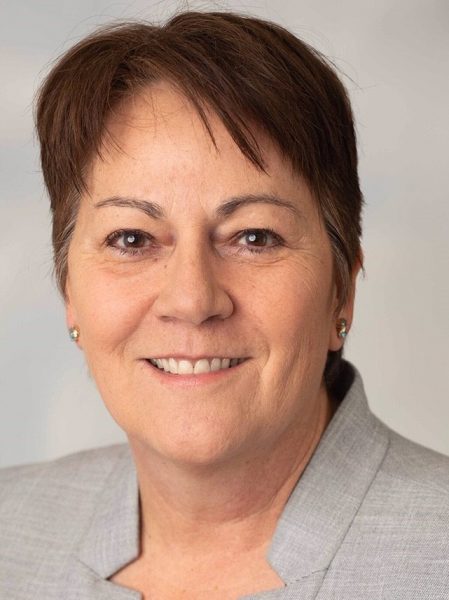
Quest for Core
The middle of the Gulf of Mexico is a busier place than you might think. Its deep-blue waters are dotted with passing boats and energy platforms. This summer, the Q4000 was one of them. Most of the time, the Q4000 is an industry rig. It has two remotely operated vehicles for inspecting and servicing wellheads and observing boreholes on the ocean...
Is There Life on Europa?
Ever since astronomers first peered through telescopes at the worlds of our solar system, people have looked to Mars for signs of life off Earth. But when scientists got a closer look at the red planet’s desolate landscape, many turned their search to the outer planets and the ice-covered moons of Jupiter and Saturn. Unlike Mars, Jupiter’s moon Europa has...
Journey to the Geosciences
A sense of adventure brought undergraduate student Camila Van Der Maal to the Jackson School of Geosciences. Her decision didn’t disappoint. As a first-year undergraduate student, Van Der Maal found herself on a research expedition to the deepwater Gulf of Mexico. The Jackson School’s Assistant Director for Communications Monica Kortsha caught up with Van Der Maal about her path to...
News
An Undersea Water Reservoir may be Muffling Earthquakes
A newly discovered offshore water reservoir in the Earth’s crust may be dampening a major...
The Energy Transition’s Secret Weapon: Salt
From conducting heat to geothermal plants to serving as holding tanks for hydrogen, salt could...
Student Outreach on the Rise
In 2023, the Jackson School of Geosciences recruited a record number of students to its...
Carbon Trapping Termites
Are some termites secretly slowing climate change? Professor Daniel Breecker and graduate student Morgan Mellum...
Air Pollution Alters Climate Change Impacts
The impacts of air pollution on human health, economies, and agriculture differ drastically depending on...
Iron Atoms on the Move in Earth’s Inner Core
Even under astronomically high pressures, there’s still space for wiggle room in Earth’s solid inner...
Report on Future of Graduate Geoscience Education Released
The American Geosciences Institute has published a new report “Vision and Change in the Geosciences:...
Awards and Honors
One of the nation’s top teaching awards has gone to Professor Jay Banner. Awarded by...
Water Quality Risks Linked More to Social Factors Than Money
Across the United States, many state policymakers use median household income to determine which communities...
Skull of Bizarre Worm- Lizard is Analyzed for First Time
Amphisbaenians are the strangest creatures you’ve never heard of. Like worms with vertebrae, scales,...
A Jurassic Texas First
A team led by scientists at the Jackson School of Geosciences has discovered the first...
Dean's Welcome

Welcome to The Geoscientist!
One of our goals with this magazine is to showcase the big, exciting and important work that geoscientists do. There is no better example than this issue’s cover story, which details a mission led by the Jackson School’s Professor Peter Flemings to collect samples of methane hydrate from deep under the Gulf of Mexico. The goal is to better understand this energy-rich substance that contains as much as 20% of the world’s mobile carbon.
Bringing methane hydrates to the surface under the same immense pressure they are found at in nature, as Peter and his team did this summer, is a challenging technical process developed in the earlier years of this project. But bringing these samples up from depths is only the beginning of the scientific discovery. Now, UT researchers and partners that include The Ohio State University, University of Washington, University of New Hampshire, Oregon State University and the United States Geological Survey are conducting tests to learn more about methane hydrate, including how it may respond to a changing climate or how it could someday be used as a source of energy.
I’m so proud of Peter and our collaborators for successfully undertaking this massive effort, with support from the Department of Energy. The permitting, contracts and logistics involved in chartering a drilling rig to the deepwater Gulf are a Herculean effort for a university. But this is how cutting-edge geoscience is done!
The job of creating the next generation of geoscience leaders remains a top priority at the Jackson School, and that can only be accomplished by great teachers. To that end, I want to brag on several educators who are highlighted in the awards section. Professor Jay Banner, who leads our Environmental Science Institute, was honored with the Robert Foster Cherry Award for Great Teaching, which is considered one of the highest honors for teaching in the country. And Jackson School graduate students were among the among the winners of the Outstanding Graduate Teaching Assistant Award from the National Association of Geoscience Teachers. These great teachers are an inspiration to their students and colleagues!
Enjoy The Geoscientist!

Claudia Mora, Dean
